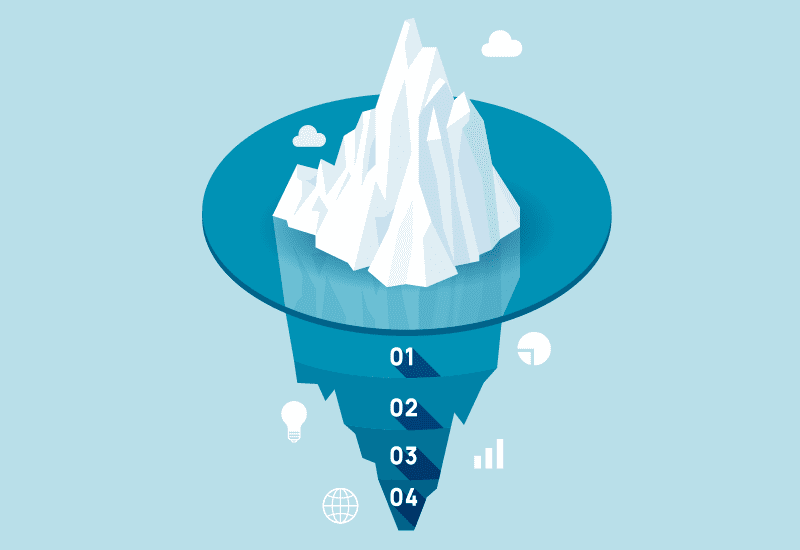The Costs of Managing Technical Debt
Modern Solutions to Manage and Reduce Technical Debt
Kelsey Young, Copywriter and Media Specialist
5 Min Read

Years ago, you made an investment in your business’s technology expecting to yield positive returns. The investment did, for a while. Now you look at the emerging technology out there and there’s a conflict within you. Why upgrade your technology again when your current investment, while dated, still works fine.
That dated technology might be costing you more money than you realize.
In Enterprise IT, technical debt manifests as outdated hardware and software, inefficient maintenance routines, limited scalability or resilience, subpar user experiences, and aging communications systems or poorly maintained code.
The Hidden Costs of Technical Debt
Each year that passes increases technical debt.
A recent McKensey Survey revealed that CIOs have reported a noticeable increase in their organizations’ technical debt in the last three years. To address this, CIOs allocate 10 to 20 percent of their technology budgets for new products. Despite these efforts, CIOs estimate that technical debt comprises 20-40% of the entire value of their technology estate before depreciation. For larger organizations, this amounts to hundreds of millions of dollars in unpaid tech debt.
Some examples of technical debt can include:
- Operating Systems: Running servers or desktops on unsupported operating systems, that no longer receive security updates and patches, can expose businesses to security vulnerabilities and compatibility issues.
- Obsolete Hardware: Using old hardware that cannot support newer software or operating systems can lead to performance bottlenecks, increased downtime, and higher maintenance costs.
- Custom-Built Applications: Custom applications built on older programming languages or platforms (e.g., COBOL, VB6, or older versions of Java) may be difficult to maintain, update, or integrate with modern applications.
- Outdated Database Systems: Continued reliance on older database systems can limit performance, scalability, and integration with new applications.
- Legacy Communication Systems: Older communication systems, such as PBX or analog phone systems, can lack the features and integrations offered by modern VoIP or Unified Communications as a Service (UCaaS) solutions, reducing communication efficiency and increasing operational costs.
- Monolithic Architectures: Large, monolithic software architectures that are not modular can be difficult to update and scale compared to more modern, microservices-based architectures.
- Old Financial Systems: Older financial software or ERP systems that are not integrated with other business functions can lead to inefficiencies in data processing and financial reporting.
- Dated Security Systems: Older security systems, including outdated firewalls, antivirus software, and intrusion detection systems, may not effectively protect against newer cyber threats.
Technical debt is challenging for businesses to quantify, yet it represents a significant financial burden that varies widely in severity and scope.
Companies should aim to accurately measure, value, and manage their technical debt while ensuring it’s regularly communicated with the business.
Managing Technical Debt
Technical debt is an inevitable aspect of business operations. The aim is not to eliminate tech debt entirely. That would require allocating all resources towards remediation, hindering other facets of the organization. However, technical debt must be managed strategically to maintain an organization’s long-term health.
Effective management can include targeted actions to “pay down” this debt, such as legacy modernizing systems to match desired architecture, streamlining application interfaces, and decommissioning obsolete apps and databases.
Legacy modernization refers to the process of updating or replacing old systems, software, or technologies with newer, more efficient solutions. The goal of legacy modernization is to ensure that the IT infrastructure supports current business needs and technological standards effectively. This process can involve several strategies, including re-platforming, rehosting, recoding, rearchitecting, replacing, or retiring legacy systems.
Some organizations find that by proactively managing their tech debt, engineers can devote up to 50% more time to projects that directly support business objectives. The CIO of a prominent cloud provider shared that by overhauling their approach to debt management, they reduced the time engineers spent addressing tech debt from 75% to 25%, significantly impacting the company’s success.
Solving Technical Debt with Legacy Modernization
Legacy modernization is commonly viewed as an effective solution to technical debt. The relationship between the two involve the following dynamics:
Addressing Inefficiencies: Over time, older systems accumulate inefficiencies that contribute to technical debt. These might include slower processing times, compatibility issues with new software, or high maintenance costs. Legacy modernization aims to resolve these inefficiencies by updating the old systems, thereby reducing the accrued technical debt.
Improving Scalability and Flexibility: Legacy systems often lack the flexibility to adapt to new business requirements or technological advances. By modernizing these systems, a company can implement more modern solutions that are scalable and flexible, reducing the technical debt associated with rigid, outdated technology.
Enhancing Security: Older systems may have security vulnerabilities that pose risks to the organization. Technical debt includes the potential costs of security breaches. Modernizing legacy systems helps mitigate these risks by incorporating up-to-date security features and compliance with current standards.
Reducing Maintenance Costs: Maintaining legacy systems can be costly, especially as technology ages and fewer people have the expertise to manage it. Technical debt often includes the ongoing costs of maintaining and patching outdated systems. Modernization can reduce these costs by implementing newer technologies.
Take the First Steps with GDC IT Solutions
To begin tackling technical debt key decision makers must come together and agree on the scope and scale of their technical debt.
Next, bring in the experts, like GDC IT Solutions. GDC is a premier information technology service provider that delivers comprehensive, industry-leading technology solutions for clients ranging from small businesses to Fortune 500 companies.
Professional IT consulting services can guide you through the fast-changing landscape of technology. GDC can assess the current state of your technical infrastructure and then devise a strategy to optimize your resources and enhance the return on your investment.
A GDC IT Consultant can:
- Help you accomplish more using fewer resources, increasing cost-efficiency.
- Offer diverse and experienced professionals to help businesses grow.
- Boost productivity and streamline processes.
- Identify and mitigate potential security risks to your networks and systems.
- Develop and discuss proven strategies and methodologies for future use.
At GDC, we prioritize our client relationships and focus on how we can help you reach our business goals. You can count on us for first-rate customer service and sensible technology solutions.




